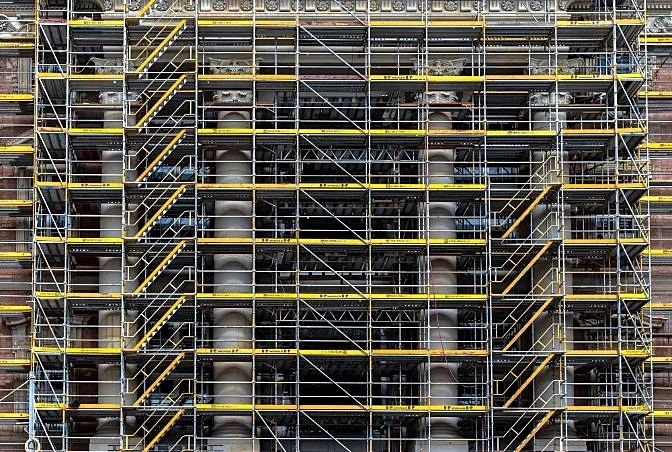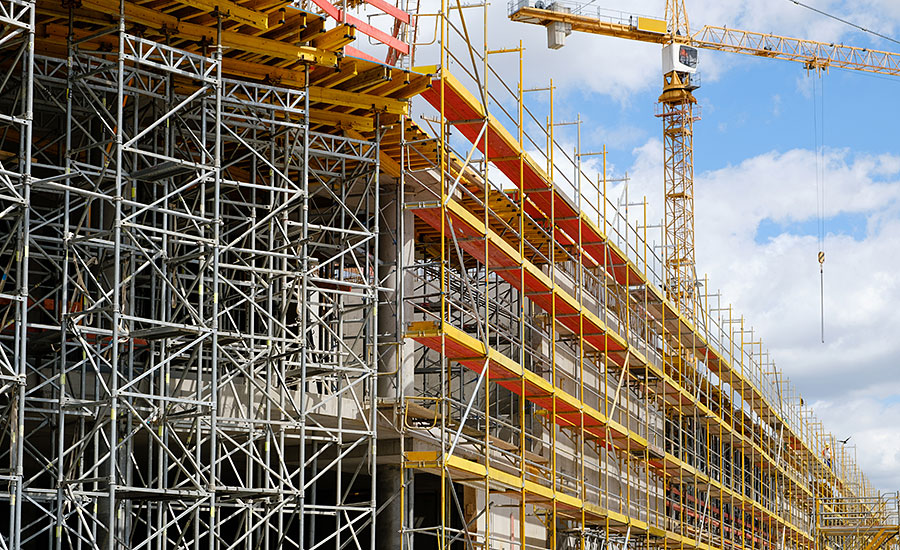High-Quality Residential Scaffolding for Seamless Home Renovations in Surrey
High-Quality Residential Scaffolding for Seamless Home Renovations in Surrey
Blog Article
The Conveniences of Scaffolding for Safety And Security and Efficiency in Structure Projects
Scaffolding is a crucial element in the realm of building and construction, substantially contributing to both safety and security and operational performance. The effect of scaffolding expands beyond standard security actions; its strategic execution can transform project timelines and end results (Scaffolding).
Boosted Employee Security

Boosted worker security is a paramount problem in the construction industry, where the dangers connected with drops and mishaps can have dire consequences. Effective scaffolding systems play a vital role in alleviating these threats by giving stable systems for workers at raised elevations. By ensuring that scaffolding is effectively set up and maintained, construction companies can dramatically decrease the likelihood of drops, which are among the leading root causes of office injuries and deaths.
Furthermore, scaffolding improves safety and security via its layout attributes. Guardrails, toe boards, and non-slip surfaces add to a secure functioning atmosphere, minimizing the risk of accidents. Additionally, scaffolding allows employees to access hard-to-reach areas without the need for makeshift options, which can compromise security requirements.
Training employees on the proper use scaffolding is just as vital. Ensuring that personnel are experienced about lots capacities, setting up procedures, and security procedures better enhances the effectiveness of scaffolding in avoiding accidents. Finally, including durable scaffolding systems within construction projects not only boosts employee safety yet additionally advertises a society of safety and security that benefits the entire labor force while boosting general efficiency.
Improved Gain Access To and Mobility

Additionally, scaffolding enables the practical transportation of devices and materials, decreasing downtime connected with moving devices. Workers can efficiently access numerous areas of a job, which is specifically vital in complicated builds where upright and straight motion is constant - Scaffolding. This availability not only improves operations yet likewise enables teams to respond quickly to transforming project demands
In addition, scaffolding can be customized to accommodate certain site problems, improving wheelchair in limited or uneven spaces. This adaptability makes sure that construction activities can continue smoothly, no matter the difficulties presented by the atmosphere. By cultivating enhanced accessibility and flexibility, scaffolding plays a vital function in supporting building crews and maximizing the total effectiveness of building tasks.
Enhanced Job Effectiveness
In building, project efficiency is dramatically affected by the effective use of scaffolding systems. By providing a steady and safe system for employees, scaffolding decreases downtime and speeds up the rate of building and construction activities. With enhanced accessibility to raised workspace, teams can complete jobs much more quickly, minimizing the overall task timeline.
The modular nature of modern-day scaffolding permits for fast assembly and disassembly, enabling swift shifts between different stages of a task. This flexibility not just improves operations but also adds to far better coordination amongst numerous trades, as several teams can work concurrently on various areas of a Scaffolder Surrey structure.
In addition, scaffolding guarantees that workers are located properly to do their jobs without unnecessary pressure or danger of injury, thus reducing the possibility of accidents that can bring about expensive delays. Boosted precaution installed in scaffolding systems, such as guardrails and toe boards, more support effective procedures by keeping worker focus on the job at hand instead of security issues.

Convenience for Various Tasks
Scaffolding systems stand out for their versatility throughout a vast array of building and construction jobs, with the ability of conference certain site requirements and tasks. Their modular design permits for fast changes to suit numerous building kinds, from household to business frameworks, guaranteeing that workers have risk-free access at different elevations and angles.
These systems can be customized for varied applications, such as frontage job, indoor renovations, or durable commercial jobs. For example, lightweight aluminum scaffolds are optimal for interior job, while robust steel frameworks supply the needed support for large construction. The versatility of scaffolding prolongs to its ability to be configured for both long-term and short-lived structures, permitting contractors to successfully prepare and execute their jobs.
Moreover, scaffolding can be employed in tough atmospheres, consisting of city setups where area is restricted or on irregular terrain where typical access remedies are not practical. This flexibility reduces the requirement for several gain access to remedies, reducing expenses and project timelines. By fitting a range of tasks and problems, scaffolding enhances the overall performance and efficiency of building and construction efforts, proving to be an important property in the structure industry.
Compliance With Security Criteria
How can building and construction projects guarantee the safety of workers while maintaining performance? Regulatory structures, such as OSHA in the United States, give standards that control the use of scaffolding, guaranteeing that it fulfills stringent safety and security criteria.
Correct scaffolding layout and setup play a crucial function in conformity. Training employees on safe scaffold use and the relevance of compliance with safety and security criteria additionally enhances a culture of safety on-site.
Furthermore, documentation and record-keeping pertaining to safety assessments and worker training are important. These methods not only demonstrate conformity but additionally give accountability and transparency. Eventually, by prioritizing adherence to security standards, building and construction tasks can foster a more secure workplace, thus increasing efficiency and performance without jeopardizing employee security.
Final Thought
In verdict, scaffolding serves as an essential part in structure tasks, considerably improving safety and security and effectiveness. Adherence to security requirements emphasizes the value of scaffolding in accomplishing successful task end results, making it crucial in the construction industry.
Scaffolding is an essential component in the realm of construction, substantially contributing to both safety and operational effectiveness. The influence of scaffolding expands past standard safety steps; its critical execution can change project timelines and results. In verdict, including durable scaffolding systems within construction tasks not only improves worker security however likewise promotes a culture of security that benefits the whole workforce while enhancing general productivity.
In conclusion, scaffolding serves as a crucial element in structure jobs, significantly improving security and performance. Adherence to safety and security requirements highlights the significance of scaffolding in achieving effective task outcomes, making it essential in the building industry.
Report this page